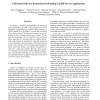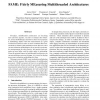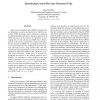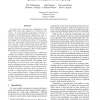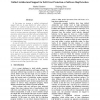IEEEPACT
2007
IEEE
15 years 13 days ago
2007
IEEE
We present a detailed characterization of instruction cache performance for IBM’s J2EE-enabled web server, WebSphere Application Server (WAS). When running two J2EE benchmarks o...
IEEEPACT
2007
IEEE
15 years 13 days ago
2007
IEEE
As multi-core architectures flourish in the marketplace, multi-application workload scenarios (such as server consolidation) are growing rapidly. When running multiple application...
IEEEPACT
2007
IEEE
15 years 13 days ago
2007
IEEE
Nowadays, multithreaded architectures are becoming more and more popular. In order to evaluate their behavior, several methodologies and metrics have been proposed. A methodology ...
IEEEPACT
2007
IEEE
15 years 13 days ago
2007
IEEE
Effective use of communication networks is critical to the performance and scalability of parallel applications. Partitioned Global Address Space languages like UPC bring the pro...
IEEEPACT
2007
IEEE
15 years 13 days ago
2007
IEEE
IEEEPACT
2007
IEEE
15 years 13 days ago
2007
IEEE
The use of multi-core, multi-processor machines is opening new opportunities for software speculation, where program code is speculatively executed to improve performance at the a...
IEEEPACT
2007
IEEE
15 years 13 days ago
2007
IEEE
In recent years, microprocessor manufacturers have shifted their focus from single-core to multi-core processors. To avoid burdening programmers with the responsibility of paralle...
IEEEPACT
2007
IEEE
15 years 13 days ago
2007
IEEE
With the advent of chip-multiprocessors, we are faced with the challenge of parallelizing performance-critical software. Transactional memory (TM) has emerged as a promising progr...
IEEEPACT
2007
IEEE
15 years 13 days ago
2007
IEEE
Multi-core processors naturally exploit thread-level parallelism (TLP). However, extracting instruction-level parallelism (ILP) from individual applications or threads is still a ...
IEEEPACT
2007
IEEE
15 years 13 days ago
2007
IEEE
In this paper we propose a unified architectural support that can be used flexibly for either soft-error protection or software bug detection. Our approach is based on dynamically...
